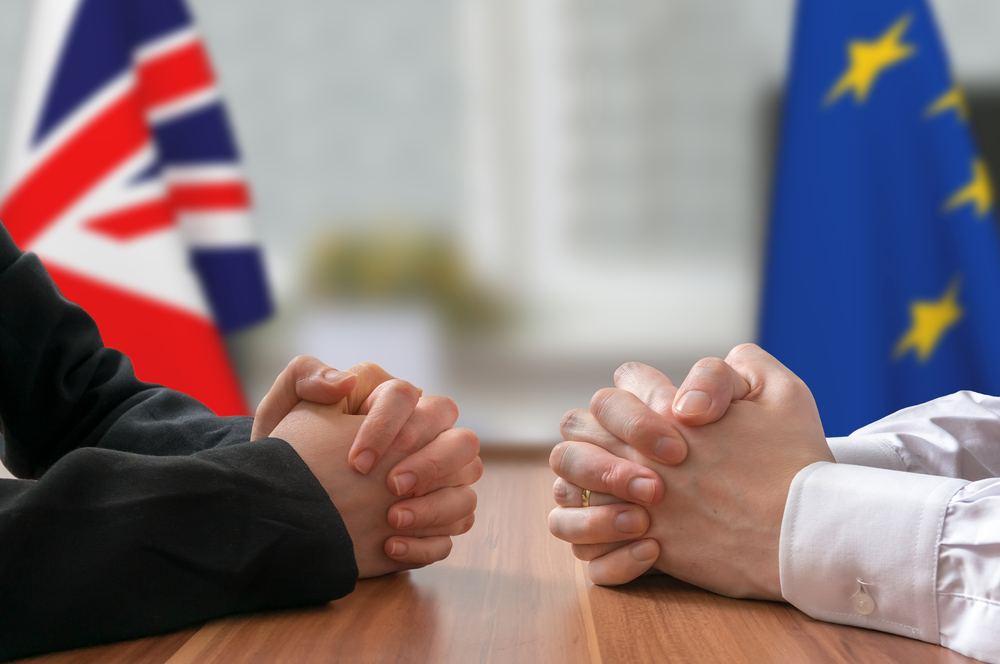Brexit: hard truths and hard choices
Written by: Nick Phipps
 19 June 2017
19 June 2017
Alasdair Smith is an Emeritus Professor of Economics at the University of Sussex, and is a member of the UK Trade Policy Observatory.
It’s now 12 months since the referendum decision, 3 months since the Article 50 notification, and only 21 months until the date on which the UK is due to exit the EU. Brexit negotiations start today, but most politicians have still not progressed beyond the stage of wishful thinking.
There are ambiguities about the objectives of both the large political parties but each seems to want some kind of free trade agreement (FTA) with the EU after Brexit, often described by a phrase like ‘tariff-free access to the single market’. Behind such inherently confused terminology lies an apparent wish to have a ‘deep’ FTA; that is to say, a UK-EU FTA which has no tariffs and sufficient regulatory convergence between the UK and the EU that many of the non-tariff advantages of the single market are retained.
Here’s the first hard truth: a deep UK-EU FTA cannot be negotiated in 21 months. Even much weaker agreements take longer, especially if the political and technical ground has not been prepared in advance, so it’s not ‘challenging’ or ‘ambitious’ or ‘difficult’: everyone who understands the reality of trade negotiations knows that it is completely impossible.
I’m going to come to the hard choices in a moment, but first an easy decision: how much time should the UK spend discussing, or attempting to discuss, with the EU-27 the details of the desired deep FTA that is the long-term objective? Easy answer: none of the desperately short amount of time left for the Article 50 negotiations should be frittered away discussing unattainable goals. The options which are attainable will require undivided attention if they are to be achieved.

If we cannot attain the long-term objective of a deep FTA within the Article 50 timetable, what options are on the table? There really are only two.
There’s the ‘hard Brexit’ option: in April 2019, the UK could agree with the EU that it will simply become completely independent of the EU, trading with the EU on WTO terms and with no regulatory agreements with the EU. There would be high tariffs on trade in some goods, and high regulatory barriers to trade in many goods and services. The economic costs of this option would be very high: particularly in cars, agriculture and food, pharmaceuticals and financial services. A negotiated ‘hard Brexit’ is not the same as ‘no deal’: containing the costs of a hard Brexit would require difficult negotiations to keep cross-Channel trade routes functioning, airlines flying, and nuclear safety procedures in place; and a demanding programme of work would be needed simply to transpose the UK’s share of EU obligations to the WTO into independent UK obligations.
It’s conceivable that a slightly-less-hard Brexit could be negotiated, a tariff-free FTA which kept most UK-EU tariffs at zero but with no regulatory agreements: tariff-free access to the EU market, but no UK participation in the single market. This is the model which the EU adopted for the association agreements with the countries of central and eastern Europe in the 1990s. Such an arrangement would reduce some of the costs of hard Brexit, though there are many goods for which WTO tariffs are low; but the absence of a regulatory agreement would be a problem for many manufacturing sectors, including cars and food products and for most service sectors. It’s not even certain that a tariff-free deal in food and agriculture could be achieved if Britain has the ambition to develop its own agricultural policy after Brexit.
The alternative to a hard Brexit is the EEA (European Economic Area) option, a relationship with the EU of the kind which Norway and some other EFTA (European Free Trade Agreement) countries have. This gives largely tariff-free trade with the EU and full participation in the internal market. It does not, however, sit within Theresa May’s red lines. There is freedom of movement of labour to almost the same extent as for EU members. The European Court of Justice (ECJ) does not have direct jurisdiction over the EEA arrangements, but they are overseen by the EFTA court which closely follows the jurisprudence of the ECJ. And the EEA countries make financial contributions to Brussels.
The EFTA countries are not members of the EU customs union, and so have a degree of independence in setting their external trade policy. Some border controls to enforce rules of origin are therefore required. The EFTA countries are not subject to the Common Agricultural Policy (CAP) and the Common Fisheries Policy. To maintain borderless trade, especially at the intra-Ireland border, the UK might well wish to have a customs union (CU) agreement with the EU and would probably have to commit to maintaining some alignment with the CAP.
This ‘EEA+CU’ option has the advantage of reducing greatly the economic costs of Brexit by retaining most of the economic advantages of EU membership during a transitional period in which a long-term deep FTA could be negotiated. It has the disadvantage to the committed supporters of Brexit that the UK would not have ‘taken back control’ of its borders, its laws or its external trade policy, and would continue to make financial contributions to Brussels. The Brexiteers also fear, understandably, that once the UK is in this arrangement, which many Remainers will find an acceptable second-best to EU membership, the transition may be indefinitely prolonged so the date on which the UK ‘takes back control’ may recede into the distant future.
Some sort of bespoke transitional deal could be imagined, where say there was tariff-free trade, some curtailment of free movement of labour and only restricted membership of the single market; many of the Labour party’s statements point in this direction. But this has the same problem as the deep FTA – it is simply impossible to negotiate and implement a bespoke transition arrangement in 21 months. In any case, the EU has made it clear that it is unwilling to contemplate such an option. We can all think about future scenarios in which the EU might become more flexible about the arrangements for an ‘outer circle’ of associate members, but that’s a discussion for the future.
The harsh reality then is that the real choice the UK faces now is between a hard Brexit in which we trade with the EU on WTO terms (though with the possibility of tariff-free trade on non-agricultural goods) and do not participate in the single market; or an EEA+CU arrangement in which current economic arrangements with the EU continue more or less unchanged. When we exit to either of these relationships with the EU, we should expect to remain in that relationship for many years, pending the conclusion at some future date of a new long-term UK-EU economic agreement.
When the government presents itself as having the objective of reaching a long-term FTA with the EU in the Brexit negotiations (with possibly a short adjustment period post-Brexit for the implementation of the deal) or when the opposition states that it wants to have most of the benefits of the single market but with less freedom of movement of labour, they are deluding themselves (and us). These are not attainable outcomes from the Article 50 negotiations: neither kind of agreement could be reached in the time available, and there’s no indication that the EU-27 is willing to discuss such possibilities during the Article 50 negotiations.
The last hard truth is that the choice between the two options cannot long be postponed. When the negotiations on future trade arrangements start, the UK will have to say what it wants. The issues which need to be sorted out with the EU-27 if we want a managed but hard Brexit are completely different from the issues which need to be sorted out with EFTA as well as the EU-27 if we want to exit into the EEA. It may be some time before the EU-27 is ready to start discussing future trade relations, at which point there will be even less time left on the clock, and either option will require much work to be done on a very tight timetable.
We face a difficult and pressing choice between two clear options, and it is regrettable that this choice was not set before the electorate in the recent general election. Politicians may have avoided putting the hard choice to the electorate, but they cannot themselves evade it much longer. The citizens of the UK, and our negotiating partners in Europe need to know clearly where the government aims to take the country; and we all need to know too whether the opposition would make a different choice.
Disclaimer:
The opinions expressed in this blog are those of the author alone and do not necessarily represent the opinions of the University of Sussex or UK Trade Policy Observatory.
Republishing guidelines
The UK Trade Policy Observatory believes in the free flow of information and encourages readers to cite our materials, providing due acknowledgement. For online use, this should be a link to he original resource on the our website. We do not however, publish under a Creative Commons license. This means you CANNOT republish our articles online or in print for free.

